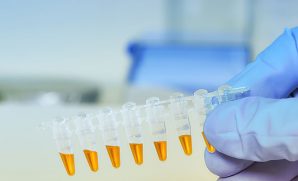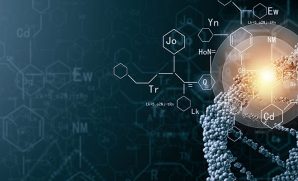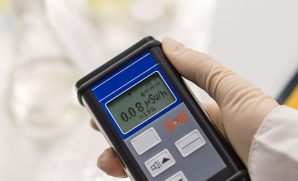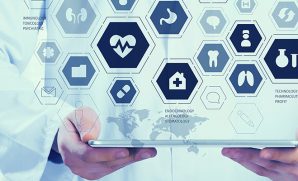The decade ahead when Data meets the DNA
Publish Date: October 6, 2020When tech firms & pharma giants come together for new possibilities
Executive summary:
Tectonic shifts are happening in how patients are getting diagnosed and treated, diseases identified and prevented. Data-driven precision-healthcare innovations could revolutionize the current business models in the Life Science sector. In this blog, introduces us to the disruption signals and shares his perspectives on why collaboration between the tech and the pharma will be the inevitable path.
With the likes of Alphabet (Google), Amazon & Apple announcing new projects in life sciences practically every week, the tech industry’s focus towards healthcare is getting evident.
Lets quickly look at some of the moves from the tech giants:
Verily (Alphabet -Google Company): Verily, which has invested in building a virtual diabetes clinic, is now very much focusing on antibody research in the recent COVID times. Google/ Alphabet allocates a third of its venture-funding to healthcare and life sciences start-ups.
Amazon: bought PillPack for $750 million. PillPack has direct access to about 40,000 patients and the license to sell prescription drugs.
Apple: The core focus is really on adding more sensors into the apple watch. The R&D team is working on adding Glucose and other sensors capable of measuring oxygenation levels, stress levels, and blood pressure apart from the standard heart rate & rhythm measurements.
Large tech firms like Apple and Google are entering the scene with significant investments and access to a previously unseen volume of data. The real hindrance, for now, is a lack of experience in regulated environments.
Disruption Signals & How are Large life Science players responding
There is a clear disruption signal for traditional pharma/life sciences companies. We are witnessing the pharma players responding to this potential disruption. These large life science companies are putting money into Artificial intelligence (Al), cloud, and IoT more than ever before. The immediate focus is on improving or optimizing clinical trial recruitment, drug discovery, and interactions until a broader vision gets created.
In the past three years, large companies, including Merck, J&J, and many more, have picked up the pace of digital health investment.
Johnson & Johnson: J&J is a firm in the digital transformation path and has been remolding itself into a health-technology innovator. Products to improve healthcare outcomes for patients and robotizing surgery are the first steps (Read more about RA-RA & Verb Surgical).
Merck: Most of Merck’s investments pass through the Global Health Innovation Fund (Merck’s VC arm), which has signed into 24 equity investments ( averaging ~$5 million) in the 2009-19 period.
Sanofi Pasteur: Sanofi is partnering with the Chinese internet giant Alibaba to build a vaccination cloud platform and has pledged to build an intelligent clinic through a tie-up with the Chinese Academy of Sciences. In 2019, Sanofi partnered with Rappi, a Latin American on-demand delivery start-up, and will be enabling its app to market and promote its brands and products. The partnership aims to expand and offer subscriptions for prescription medications, real-time interaction with medical providers,
Novartis: Novartis created an AI innovation lab and joined hands with Microsoft as its strategic AI partner in October 2019. Novartis and the Massachusetts Institute of Technology (MIT) partnered early in the decade and have been piloting on a new continuous manufacturing protocol of drugs.
Bayer: Bayer has recently inked pacts with 11 digital health start-ups, and the deal bucket mainly focusses on the fields of cardiovascular, oncology, ophthalmology, pulmonology, radiology as well as digital therapeutics. India’s Wellthy Therapeutics is one of the 11 start-ups.
Eli Lilly: There is an interesting partnership Eli Lilly got into with Atomwise Inc in the mid of 2019 to capitalize on an AI technology to accelerate the time it takes to identify and develop potential new medicines. Atomwise invented the first deep learning technology for structure-based small molecule drug discovery, and Lilly is a leader in virtual library design, with a massive number of molecules enabled by the automated synthesis in their robotic laboratory. The task ahead for the Atomwise AI algorithms is to find which of these molecules might be a potential new therapeutic for specific diseases.
AbbVie: AbbVie partnered with MCIO, Inc, a healthcare technology company specializing in wearable digital health sensors, and the focus is on outcome measures in patients with multiple sclerosis (MS) using the BioStamp n-Point system.
The real big bet is on AI. What we can see from Novartis to Eli Lily is that there is a rush and run towards partnering with AI firms to accelerate the process of drug discovery. AI built on quality and trustworthy data enables the players to make smarter, faster, and strategic decisions in the area of drug discovery.
In the last five years, we saw life science players are slowly maturing in terms of capturing and storing data. Once that foundation is achieved, there’s no doubt that pharma firms can analyze a lot of data. Also, it is crucial for the players now to build this foundation fast and robust because, in the coming decade, the amount of available data from monitoring devices is going to increase simply exponentially.
For example, AI-based systems can identify even the slightest change in air quality/moisture content or temperature deltas and enable automated responses in sterile manufacturing shop floors. They are hence qualifying the potential of avoiding a costly shutdown, a massive product recall, or an expensive equipment replacement.
For Pharma players, the real challenge is mastering the art of storing and managing the data. It is being contemplated that by 2025, 100+ exabytes (EB) of data will be created every day from healthcare devices. Most of the data might help us in understanding how the human body works and how everyday behavior influences health. Only the big tech, at present, has the technical capabilities to handle such volume and velocity of data.
Understanding and really playing in a field of strong regulations is the real hurdle of the tech giants. Since human lives are getting endangered, legislation has introduced secure gates for new products. The manufacturer must prove the safety and effectiveness of new products before they can enter the market. You cannot launch and test just like other consumer apps in this space. Big Tech is agile and fast by culture, although it is not used for maneuvering through the complex regulatory requirements.
Essentially, both tech firms & pharma players have their unique advantages that could compensate for the weakness of the other side. Collaboration is the creative pathway ahead.









